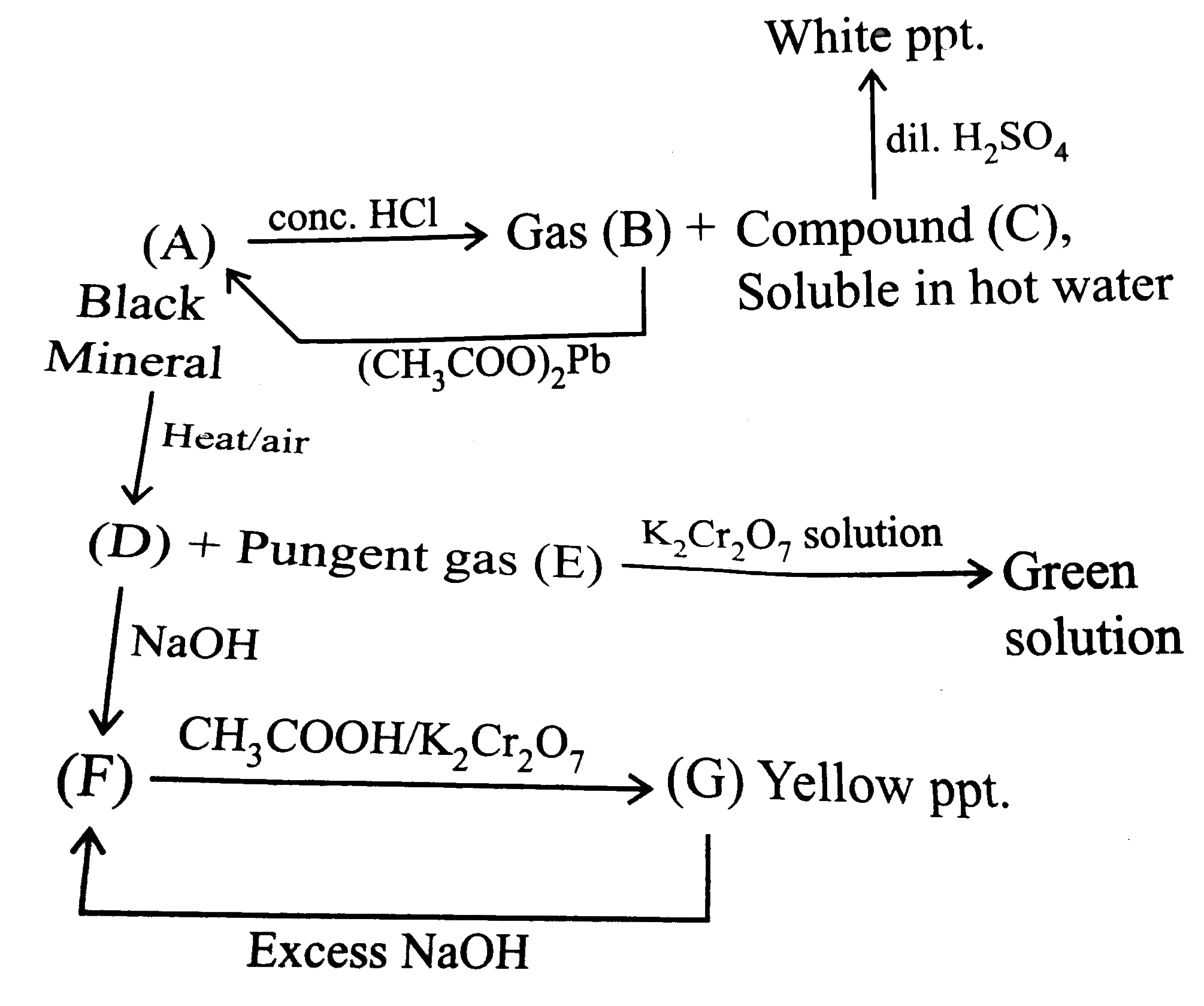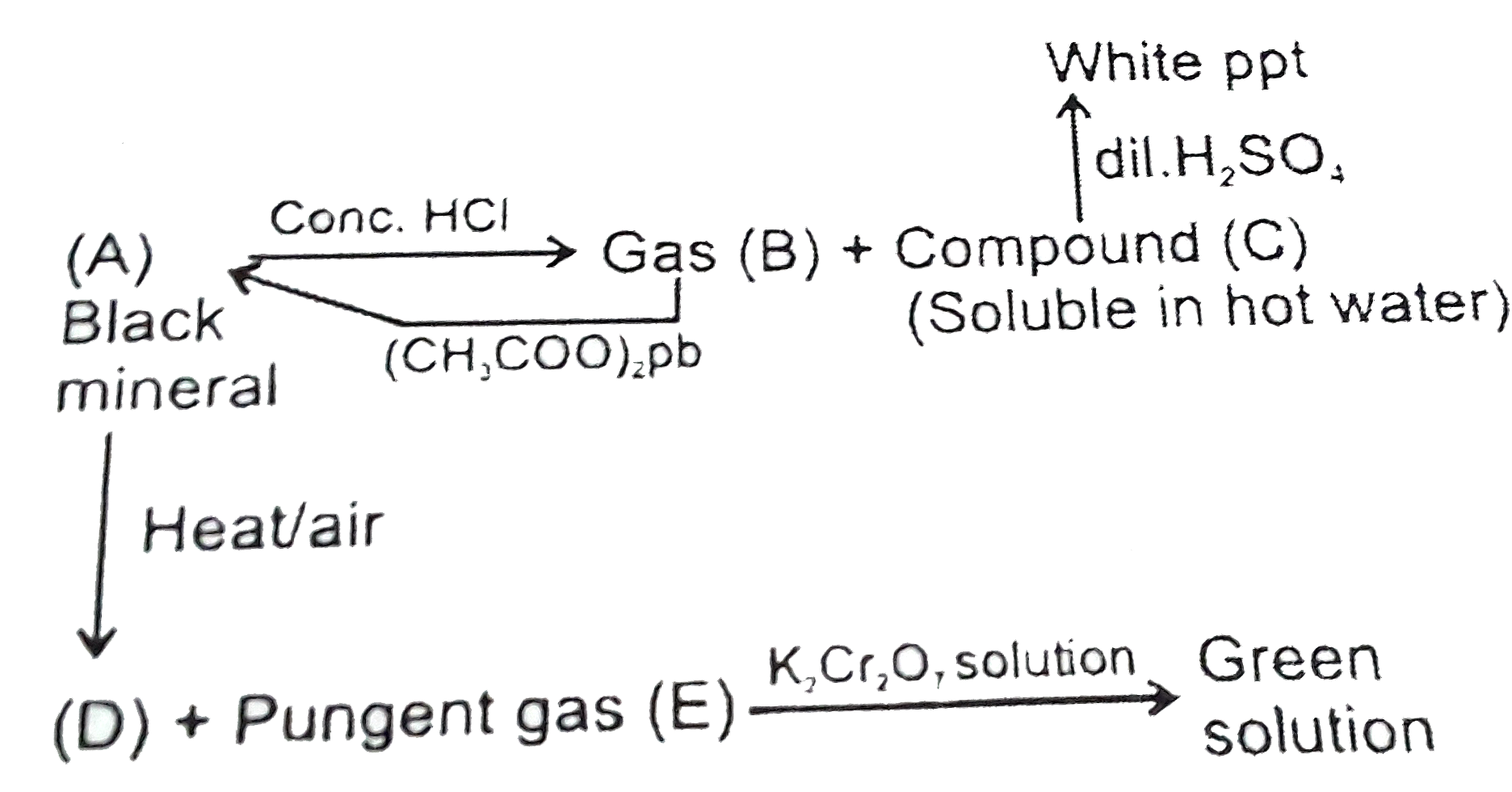An inorganic iodide (A) on heating with a solution of KOH gives a gas (B) and a solution of a compound. The gas (B) on ignition in air gives a compound (C ) and water. Copper sulphate is finally reduced to the metal on passing (B) through its solution.
The compound (C ) :
has sp3 hydbridisation of central atom(s)
has sixteen sigma bonds.
is used as a dehydrating agent.
all of these.
The correct Answer is:In the form of elemental nitrogen it
To solve the problem step by step, we will identify the compounds A, B, and C based on the information provided in the question.
Step 1: Identify Compound A
The question states that an inorganic iodide (A) reacts with KOH to produce a gas (B) and a solution of a compound. A common inorganic iodide that fits this description is phosphonium iodide (PH₄I).
Reaction:
PH4I+KOH→PH3+H2O+KI
Step 2: Identify Compound B
From the reaction above, we see that the gas (B) produced is phosphine (PH₃).
Step 3: Identify Compound C
The gas (B), which is phosphine (PH₃), is ignited in air. When phosphine burns in the presence of oxygen, it forms phosphorus pentoxide (P₂O₅) and water.
Reaction:
4PH3+6O2→2P2O5+6H2O
Thus, the compound (C) formed is phosphorus pentoxide (P₂O₅).
Step 4: Reduction of Copper Sulfate
The question also states that copper sulfate (CuSO₄) is reduced to copper metal when phosphine (B) is passed through its solution. This is consistent with the reducing properties of phosphine.
Reaction:
3CuSO4+2PH3→Cu3P2+3H2SO4
Conclusion
Based on the above steps, we conclude that:
- Compound A is phosphonium iodide (PH₄I).
- Compound B is phosphine (PH₃).
- Compound C is phosphorus pentoxide (P₂O₅).
Final Answer
The compound (C) is P₂O₅ (phosphorus pentoxide).
The question states that an inorganic iodide (A) reacts with KOH to produce a gas (B) and a solution of a compound. A common inorganic iodide that fits this description is phosphonium iodide (PH₄I).
PH4I+KOH→PH3+H2O+KI
From the reaction above, we see that the gas (B) produced is phosphine (PH₃).
The gas (B), which is phosphine (PH₃), is ignited in air. When phosphine burns in the presence of oxygen, it forms phosphorus pentoxide (P₂O₅) and water.
4PH3+6O2→2P2O5+6H2O
The question also states that copper sulfate (CuSO₄) is reduced to copper metal when phosphine (B) is passed through its solution. This is consistent with the reducing properties of phosphine.
3CuSO4+2PH3→Cu3P2+3H2SO4
Based on the above steps, we conclude that:
- Compound A is phosphonium iodide (PH₄I).
- Compound B is phosphine (PH₃).
- Compound C is phosphorus pentoxide (P₂O₅).
The compound (C) is P₂O₅ (phosphorus pentoxide).
Topper's Solved these Questions
- P BLOCK ELEMENTSBOOK - RESONANCE ENGLISHCHAPTER - P BLOCK ELEMENTSEXERCISE - ALP EX #3 OBJECTIVE
1 Video
- P BLOCK ELEMENTSBOOK - RESONANCE ENGLISHCHAPTER - P BLOCK ELEMENTSEXERCISE - ALP PART 1 OBJECTIVE
100 Videos
- P BLOCK ELEMENTSBOOK - RESONANCE ENGLISHCHAPTER - P BLOCK ELEMENTSEXERCISE - PART -III : Match the column
2 Videos
- NUCLEAR CHEMISTRYBOOK - RESONANCE ENGLISHCHAPTER - NUCLEAR CHEMISTRYEXERCISE - STAGE-II
1 Video
- P-BLOCK ELEMENT (BORON AND CARBON FAMILY)BOOK - RESONANCE ENGLISHCHAPTER - P-BLOCK ELEMENT (BORON AND CARBON FAMILY)EXERCISE - PART - III : OLYMPIAD PROBLEMS (PREVIOUS YEARS) STAGE - V (INTERNATIONAL CHEMISTRY OLYMPIAD (IChO)) Problem 3
8 Videos
Similar Questions
An inorganic iodide (A) on heating with a solution of KOH gives a gas (B) and a solution of a compound. The gas (B) on ignition in air gives a compound (C ) and water. Copper sulphate is finally reduced to the metal on passing (B) through its solution.
What is true about gas (B) and compound (C ) ?
View SolutionAn inorganic iodide (A) on heating with a solution of KOH gives a gas (B) and a solution of a compound. The gas (B) on ignition in air gives a compound (C ) and water. Copper sulphate is finally reduced to the metal on passing (B) through its solution.
Select the correct statement from the following for the gas (B).
View SolutionIdentify (A) to (E).
(a) An inorganic iodide (A) on heating with a solution of KOH gives a gas (B) and the solution of a compound (C).
(b) The gas (B) on ignition air gives a compound (D) and water.
( C) Copper sulphate is reduced to the metal on passing (B) through the solution.
(d) A precipitate of the compound (E) is formed on reaction of (C) with copper sulphate solution.
View SolutionIdentify (A) to (C).
(a) An inorganic iodide (A) on heating with a solution of KOH gives a gas (B) and the solution of a compound (C).
View Solution
Gas (B) on passing through CaSO4 solution will give
View Solution
Gas (B) on passing through cadmium acetate solution will give :
View SolutionA black mineral (A) on heating in presence of air gives a gas (B). The mineral (A) on reaction with dilute H2SO4 gives a gas (C) and a solution of a compound (D) on passing the gas (C) into an aqueous solution of (B), a white turbidity is obtained. The aqueous solution of (D) on reaction with potassium ferricyanide gives a blue compound (E). Identify (A) to (E) and give chemical equations for the reaction involved.
View SolutionAn inorganic compounds gives off O2 on heating. It also makes the colourless solution of potassium iodide to acquire purple tinge. The compound can be
View SolutionWhen an oxide of manganese (A) is fused with KOH in the presence of an oxidising agent and dissolved in water, it gives a dark green solution of compound (B). Compound (B) disproportionates in neutral or acidic (C ) oxidises potassium iodide solution to a compound (D) and compound (A) is also formed. Identify compounds A to D and also explain the reactions involved.
View SolutionIdentify A to E. Pyrolusite on heating with KOH in the presence of air gives a dark green compound (A). The solution of (A) on treatment with H2SO4 gives a purple coloured compound (B), which gives the following reactions:
(a). KI on reaction with alkaline solution of (B) changes into a compound (C).
(b). The colour of the compoud (B) disappears on treatment with the acidic solution of FeSO4.
(c). With conc. H2SO4 compound (B) gives (D) which can compose to yield (E) and oxygen.
View Solution
